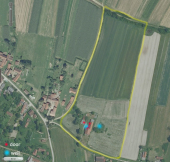
 1
1

























"Never doubt that a small group of thoughtful, committed citizens can change the world; indeed, it's the only thing that ever has."-Margaret Mead "The only thing worse than being blind, is having sight but no vision."-Helen Keller




Miles Flansburg wrote:Hello Ronaldo, can you tell us where your land is?








Live simply so others might live




patrick canidae wrote:second photo has what looks like stinging nettle seed heads, and some nettle leaves of younger vegetative plants in the bottom of the photo, if that is the plant group you are concerned with in that photo
third plant appears to be western salsify; dig up roots and post a pick and that would help quite a bit
last photo looks like a nice stand of bloomed out alfalfa(Lucerne)







patrick canidae wrote:second photo has what looks like stinging nettle seed heads, and some nettle leaves of younger vegetative plants in the bottom of the photo, if that is the plant group you are concerned with in that photo
third plant appears to be western salsify; dig up roots and post a pick and that would help quite a bit
last photo looks like a nice stand of bloomed out alfalfa(Lucerne)















"Never doubt that a small group of thoughtful, committed citizens can change the world; indeed, it's the only thing that ever has."-Margaret Mead "The only thing worse than being blind, is having sight but no vision."-Helen Keller












patrick canidae wrote:The alfalfa is alfalfa.
The salsify like plant is a very small specimen. If it were larger it would be easier to identify by the usually large tap root. Your plant does have a taproot, albeit crooked as a dogs hind leg and is small enough to make ID difficult.
What are your primary concern with these plants? Are you going to eat them yourself, graze them with livestock, or just trying to get a handle on your native flora?
Happy New Year!




Dave DeNard wrote:The second one is most deff a type of amaranth or "ancient grain". Lambs quarter perhaps or known as the name stated above, pig weed. I have those in michigan. Spread those babies and you can make bread and what not with it.
Is your farm near other permies? Im in south america right now trying to find land to homestead. Is it just you or are there other like minded folk???





|
Give a man a gun and he'll rob a bank. Give a man a bank and he'll rob everyone. Even tiny ads:
Freaky Cheap Heat - 2 hour movie - HD streaming
https://permies.com/wiki/238453/Freaky-Cheap-Heat-hour-movie
|




